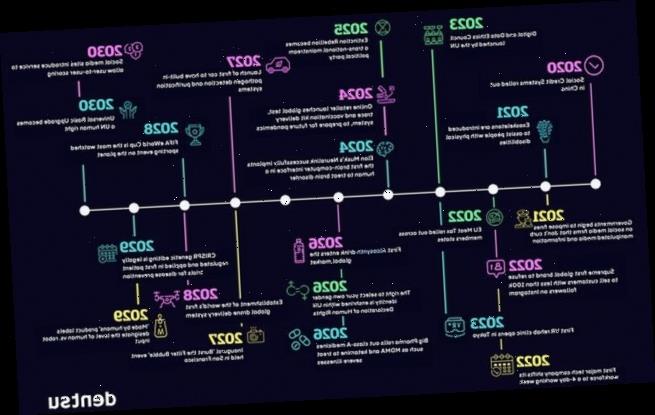When the late Notorious B.I.G. was inducted into the Rock and Roll Hall of Fame in November, he, like the other living or dead inductees, was celebrated in the HBO special that served as a virtual ceremony with a biographical short film — one that was just well done enough to make a lot of viewers wonder: Why has Christopher Wallace’s story never been made into a theatrical feature? It had, but that’s just how forgettable the 2009 biopic “Notorious” was; 13 years later, it’s as if that film never existed, leaving the life of the man many still regard as hip-hop’s greatest star ripe for re-mythologizing.
Some of the producers behind that earlier effort, including Sean “Puffy” Combs and Biggie’s mother, Voletta Wallace, have joined with new collaborators for another, much better try at burnishing the hip-hop titan’s legacy with Netflix’s “Biggie: I Got a Story to Tell.” Nearly every creative decision represents some kind of reversal of what was done with the prior biopic. No longer is there the inexorable, ominous pull toward beefing with Tupac Shakur and the still mysterious but by now exhausted murder that took Wallace’s life on the streets of L.A. in 1997. That’s still part of the saga, but here it’s packed, along with the triumphs of Biggie’s last couple of years, into what nearly feels like an extended epilogue.
The film narrows its focus to an “origin story,” focusing on the nitty-gritty of the underground rap scene and crack-dealing trades of the early ‘90s more than what happened when Biggie really went big-time. It’s satisfyingly rich in anecdotal detail, even if the movie can’t help but feel like a stretched-out first-act setup for second and third acts that, like the rest of Wallace’s life beyond age 24, never arrive.
The doc’s opening minutes are spent establishing that Biggie will get to be the star of his own posthumous movie this time, thanks to the fact that his lifelong friend Damion “D-Roc” Butler (a co-producer on the film) kept a primitive video camera rolling all the time once it looked like this rap thing might work out for the future star and his coterie of neighborhood buddies. Butler did capture some good footage back in the day, particularly a street rap battle in enemy territory in which a nascent Biggie is seen schooling a challenger, a moment that’s recalled as a turning point toward greater dominance to come.
But Wallace had a certain opacity on camera that he never had on record, describing himself as “still shy — I’m a quiet dude, man” — just your regular introvert openly grasping for riches, fame and to become the most outsize personality in an art form based on braggadocio. There are also unspoken limitations to Butler’s and Wallace’s fetish for running through reams of VHS tapes; much of the midsection of the movie is devoted to the future superstar’s side hustle as a teen crack dealer, when the cameras definitely weren’t turned on.
So director Emmett Malloy makes liberal use of his film’s best asset: interviews with the childhood pals who were there for both the drug-dealing and rhyme-peeling days, some of whom seem to have done a lot of the maturing that Wallace never got to, one or two of whom still seem a little shady. Malloy (whose previous credits include the “Tribes of Palos Verdes” feature, a White Stripes concert film and a number of Vampire Weekend videos) has the good sense not to bring in any celebrity testimonials — unless Biggie’s mentor, Combs, and (briefly) his wife, Faith Evans, count — favoring peers, inspirations and enablers, including his first producer.
“I Got a Story to Tell” pays some attention to the actual musical intricacies and merits of hip-hop, and there’s an utterly thrilling scene where Harrison explains how young Biggie had an instinct to take the instrumental bebop rhythms he absorbed and incorporate them into his vocal cadences — with Malloy setting one of his signature raps against a video of a Max Roach drum solo.
The film also does a solid job of establishing how Biggie was different from some of the rap stars that came immediately before him — not sexy like LL Cool J or political like KRS-One, but helping to introduce a strain of realistic, cinematic street hedonism. You could appreciate the brilliance of his sophisticated rhyme schemes and flow even if the “Scarface” fantasies of his music videos seemed like something he would have outgrown. Looking for a redemptive element at the end of his 24-year life, the movie positions the second and final album he completed, “Life After Death,” as a more positive effort after his darker, star-making debut, “Ready to Die,” although that really seems more down to his reincorporating the good-time aspects of his first single, “Party and Bullshit,” than suddenly developing a social consciousness.
Hip-hop historians may also detect some spin in the movie’s short, obligatory final stretch as, without going into any details or conspiracy theories, Tupac is portrayed as a feisty aggressor and Biggie something more like a peace-seeking pussycat. “This story doesn’t have to have a tragic ending,” Combs vows at the movie’s outset — but, actually, yeah, it kind of does, no matter how many beautiful Brooklyn murals there are to burnish Biggie’s legacy almost a quarter-century later. The movie clearly means to venerate Wallace at the end, but can’t find the perfect words for explain what all those paint jobs mean, beyond extolling that in a borough of minuscule expectations, he became big.
Fortunately, “I Got a Story to Tell” bears a life force that looms even larger than Wallace’s — that of his Jamaican-born “moms,” Voletta, who has so much star presence that even Angela Bassett couldn’t quite do justice to it when she played her in the 2009 movie. Voletta’s charm is undiminished even when she’s uttering a rare profanity at the memory of having mistaken her son’s precious, sun-burnished crack stash for hardening mashed potatoes, which she threw out. With her son still hiding in plain sight a little bit, even amid that aggressive wealth of words and all that vintage VHS footage, it’s really up to a notorious M.O.M. to carry the movie.
Read More About:
Source: Read Full Article

